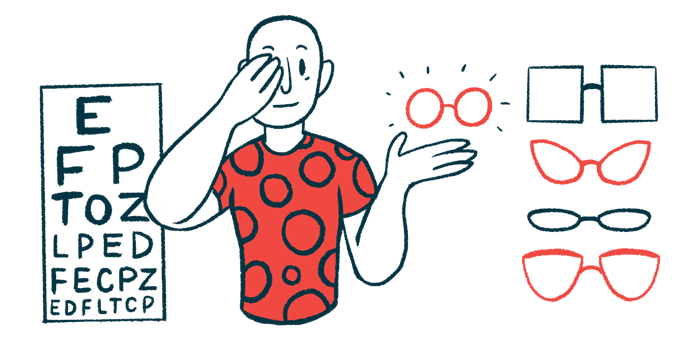Children With CLN2 Show Eye Degeneration Despite Treatment

Children with late infantile Batten disease on approved enzyme replacement therapy show signs of age-related degeneration in the light-sensing part of the eyes, a new study shows.
The study, “Ongoing retinal degeneration despite intraventricular enzyme replacement therapy with cerliponase alfa in late-infantile neuronal ceroid lipofuscinosis type 2 (CLN2 disease),” was published in the British Journal of Ophthalmology.
Brineura (cerliponase alfa) is the only therapy approved in the U.S. to treat late infantile Batten disease, also called CLN2 disease. The therapy, delivered via injection directly into the brain, delivers a functional version of the enzyme whose defect causes CLN2 disease.
Data from clinical trials have shown that Brineura can slow the loss of motor function and language skills for children with CLN2 disease. Another feature of this disease is degeneration of the retina, the area at the back of the eye that houses light-sensing cells. Brineura’s effects on retinal degeneration have not been thoroughly investigated.
Scientists in Germany conducted an observational study as part of a clinical trial (NCT04613089) where they tracked retinal degeneration for children with CLN2 disease who were on the enzyme replacement therapy.
The study included 28 children (11 female, 17 male) with a confirmed diagnosis of CLN2 disease. The average age at diagnosis was just under 4 years and the average age for starting on Brineura was 54.7 months (just over 4.5 years). The average age at the initial eye examination was 57.9 months.
Just over half of the children (15 out of 28) underwent more than one eye examination over an average follow-up time of a little more than 1.5 years. The researchers noted that specific follow-up times varied widely among patients, due in large part to impacts of the COVID-19 pandemic during the study.
Statistical analyses of all available data showed a negative correlation between patients’ age and central retinal thickness (CRT) measurements. In other words, the data suggested that older patients had thinner retinas, which implies that the children were experiencing ongoing retinal degeneration as they aged.
Detailed examination of the data indicated there was “a phase of accelerated retinal degeneration,” where the most profound degeneration occurred, between about ages 3 and 7, the researchers said. The highest rates of CRT decrease were noted between the ages of 56 and 80 months (about 4.5 to 6.5 years old).
No differences in CRT changes with age were noted based on patients’ specific Batten-causing mutations.
“The present study demonstrates progression of retinal degeneration in children with late-infantile CLN2 disease treated with” Brineura, the researchers concluded.
The team said these findings support the idea that therapies delivered directly to the eyes may be necessary to prevent retina degeneration in CLN2 disease and noted that the data collected “may serve as control data in future therapeutic trials.”
CRT values correlated with scores on a standardized visual assessment called the Weill Cornell Batten Scale (WCBS), analyses also showed.
“We validated the reliability of the WCBS, an easy to perform ophthalmic clinical rating method, in our cohort of patients. The strong correlation between the WCBS scores and the CRT values identifies the WCBS as a useful tool to assess therapy efficacy of retina-directed treatments in future upcoming trials,” the researchers wrote.
Brineura is sold by BioMarin, which was not involved with this study.






